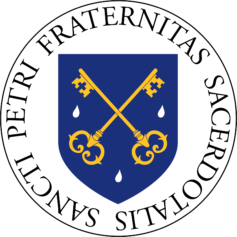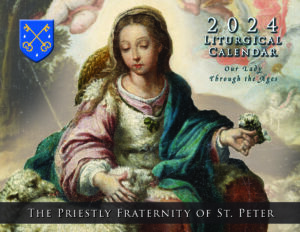The Parables of Christ, Part II: Their Historical Truth and Accuracy
 by Father James Buckley, FSSP
by Father James Buckley, FSSP
From the January 2011 Fraternity Newsletter
In Mark 4:11–12 (and in the parallel passages from Matthew 13:13 and Luke 8:10) Christ says that the apostles “are given to know the mystery of the kingdom of God” but that others are told this truth in parables so that “hearing they may hear and not understand.” From these words the question arises about Christ’s intention in using parables.
Writing in 1926, the Dominican Fr. James Voste, a professor of New Testament exegesis at the Angelicum, observed that many non-Catholic commentators repudiated this question. According to them, the difficulties and obscurities recorded in the parables are the invention of the evangelists and not what Christ Himself actually said. They claim that the evangelists imposed a difficult and enigmatic form on the parables of Our Lord to provide a reason to the early Christians for Israel’s blindness and exclusion from the kingdom of God.
Even to this day several well-respected and influential non-Catholic exegetes maintain that the parables which appear in the Gospels are different from the parables originally given by Our Lord. C.H. Dodd, for example, commenting on Mark 4:11–20, writes: “These facts create at once a presumption that we have here not a part of the primitive tradition of the words of Jesus, but a piece of apostolic teaching.” (Parables of the Kingdom, p.4) The highly regarded Joachim Jeremias writes: “Already in the earliest period of all, during the first decade after the death of Jesus, the parables had undergone a certain amount of reinterpretation…” (The Parables of Jesus, p. 12)
This explanation, which denies the authentic history of the parables, was identified and condemned by Lamentabile. (“The Evangelists themselves as well as Christians of the second and third generation artificially arranged the parables and so they gave a reason for the small fruit of Christ’s preaching among the Jews.”)
But even among Catholic exegetes who accept the historical authenticity of the New Testament parables, there is a difference of opinion regarding the meaning of Christ’s saying that He used parables so that “seeing they see not, and hearing they hear not, neither do they understand.”
In his commentary on St. Matthew’s Gospel, the outstanding biblical scholar, Fr. Cornelius de Lapide, S.J. wrote: “Christ spoke in parables, with this intention and this end in view; that He might instill into them (the scribes and Pharisees) a sincere desire of examining their meaning, believing in Christ and being saved, and that having suffered a temporary blindness with regard to the parables which they did not comprehend, they might the more eagerly desire Christ, the true light, and ask of Him the explanation of the parables” (The Holy Gospel According to Saint Matthew, Volume II, p. 10).
This appears to be the majority opinion, but there is a minority opinion which is well argued by another Jesuit scholar, Fr. Leopold Fonck, S.J. Father Fonck, first of all, acknowledges that not all the parables needed an explanation and maintains that among Our Lord’s hearers there were many who were not adverse to further instruction. These, when they could not penetrate the meaning of the parables of the kingdom, he says, would seek an explanation from the disciples. The scribes and Pharisees, whose militant disbelief in Christ and in His miracles erupted in the blasphemous accusation that He was possessed (Mt. 12:24), were a different case. By their actions “they had brought upon themselves the sentence of reprobation” so now “they had to experience the punishment of their hard-heartedness.” These men would hear but not understand and their unbending pride would prevent their enlightenment. Since a Catholic is free to accept either de Lapide’s or Fonck’s position, I will next month explain one of the clues for understanding the meaning of some parables.
January 5, 2011








